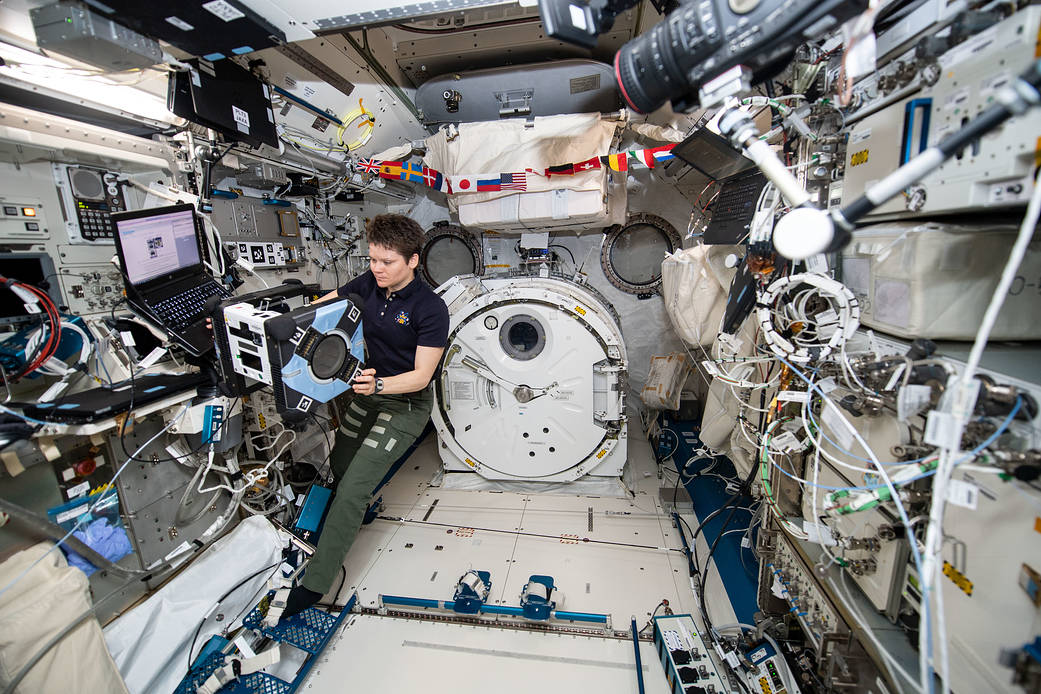
There are some unexpected guests aboard the International Space Station (ISS): cute cube robots called Astrobees which help the crew with day to day tasks. Now the first Astrobee robot has undergone hardware tests to check whether its subsystems, including avionics, cameras, propulsion, and docking for power and data transfer, are working correctly. The tests were performed in advance of the full launch of the robots later this spring.
NASA astronaut Anne McClain was responsible for checking out the status of the Astrobees, and you can see her tending to one of the robots called Bumble in the photo above. The docking station where the Astrobees recharge is located to her right, and was installed into the Kibo ISS module on February 15.
McClain was calibrating the Astrobee by mapping the Kibo module. The robots will be used for assistance tasks, and can work either autonomously or by remote control. They perform tasks like taking inventory, documenting steps taken by the astronauts as they perform experiments (by taking pictures using their on-board cameras), or moving cargo through the station. The bots are also little scientists themselves, as they can act as a research platform which can carry out experiments when outfitted with the required elements.
Each robot is a cube shape measuring one foot per side, and is equipped with an arm which allows it to grab onto handrails around the station. This lets the robot stay in place to assist astronauts with tasks, and conserves energy when it is not moving around.
The hope is that these robot pioneers can collect information about how to assist astronauts, so that hardware and software can be developed for future missions.
Editors' Recommendations
- Space station’s new robotic arm springs to life
- NASA’s first space tourism mission to ISS delayed
- NASA delays launch of its first tourism mission to ISS
- NASA reveals launch date for its first space tourism mission to ISS
- The space station is about to welcome its first film crew





